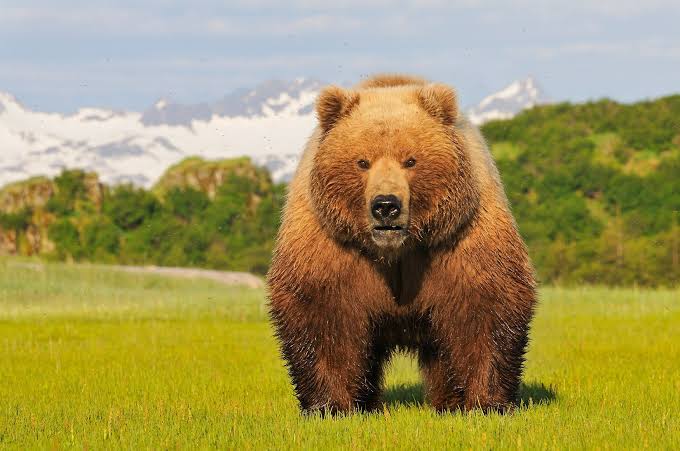The family Azhdarchidae was erected after the discovery of the type species Azhdarcho lancicollis (1984), a pterosaur that lived in modern-day Kazakstan and Uzbekistan roughly 92 million years ago.
Its name derives from the word azhdar, a famous dragon-like creature from the Persian mythology. The specific epithet lancicollis refers to the Latin words lancea (meaning “lance” or “spear”) and collum (“neck”).
There were two main types of azhdarchid morphology: the “blunt-beaked” forms with shorter and deeper bills, and the “slender-beaked” ones with longer and thinner jaws.
Azhdarchids lived during the Cretaceous, and most of their fossils date from the uppermost stage of this period (100–66 million years ago).
However, there is an isolated vertebra of an earlier age that some scientists attribute to a yet unidentified species of azhdarchid pterosaur. This bone was found in Romania and is dated from about 140 million years ago.
Given that azhdarchids are definitely present at the final stage of the Cretaceous, the discovery from Romania could potentially give the group a stratigraphic record that spans 80 million years.
This is longer than any other pterosaur family!
The particular group of pterosaurs was globally widespread. Paleontologists have so far discovered azhdarchid remains in North and South America, Europe, Africa, and Asia.
The global distribution of azhdarchids undoubtedly demonstrates their evolutionary success.
Size
Some azhdarchid species, like Arambourgiania, Hatzegopteryx, and Quetzalcoatlus, achieved wingspans between 10 and 12 meters (33–39 ft), making them the largest flying creatures to have ever existed.
A recently discovered azhdarchid from Transylvania may have been even larger. Paleontologists nicknamed this yet unnamed specimen “Dracula”, and they estimate it may have had a wingspan of 12–20m (39–66 ft)!
Not every azhdarchid was a giant, though. Genera like Eurazhdarcho and Bogolubovia were smaller, achieving modest wingspans of about three and four meters (9.8–13 feet).
. The skulls of the largest azhdarchids had an estimated length of 3 meters (9.8 ft), making them some of the largest skulls among non-marine animals.
. A 2021 study found the vertebrae in azhdarchid necks were arranged like spokes of a bicycle wheel. This adaptation enabled them to carry large prey while flying without breaking their elongated necks.
. The gigantic Hatzegopteryx from Romania was probably the apex predator in the Hațeg Island ecosystem, a large offshore island that existed during the Late Cretaceous period in the European archipelago. The giant azhdarchid was significantly larger than any other terrestrial carnivore of the region, and thanks to its robust anatomy it could have been adapted to feed on the dwarf dinosaur species that inhabited the island during this time.
Giants of the Ancient Skies - Azhdarchids (Part 1) :kitty-cat:
Were These Animals Too Big to Fly? - Azhdarchids (Part 2) :kitty-cri:
Giant Prehistoric Death Storks - Azhdarchids (Part 3) :biblically-accurate-kitty:
Megathreads and spaces to hang out:
- ❤️ Come listen to music and Watch movies with your fellow Hexbears nerd, in Cy.tube
- 💖 Come talk in the New weekly queer thread
- 🧡 Monthly Neurodiverse Megathread
- 💛 Read about a current topic in the news
- ⭐️ October Movie Nominations ⭐️
reminders:
- 💚 You nerds can join specific comms to see posts about all sorts of topics
- 💙 Hexbear’s algorithm prioritizes struggle sessions over upbears
- 💜 Sorting by new you nerd
- 🌈 If you ever want to make your own megathread, you can go here nerd
- 🐶 Join the unofficial Hexbear-adjacent Mastodon instance toots.matapacos.dog
Links To Resources (Aid and Theory):
Aid:
- 💙Comprehensive list of resources for those in need of an abortion -- reddit link
- 💙Resources for Palestine
Theory:
- ❤️Foundations of Leninism
- ❤️Anarchism and Other Essays
- ❤️Mega upload with theory for many tendencies
Remember nerds, no current struggle session discussion here to the general megathread, i will ban you from the comm and remove your comment, have a good day/night :meow-coffee:
New Megathread Nerds!!! :arm-L: :kitty-cat: :arm-R:
@aaaaaaadjsf @Abraxiel @Acute_Engles @AnarchaPrincess @Antilope @Alaskaball @Aliveelectricwire @BrookeBaybee @bbnh69420 @buh @cawsby @CDommunist @Cheesewizzard @Cherufe @ClathrateG @ClimateChangeAnxiety @clover @comi @Commander_Data @ComradeCmdrPiggy @ComradeEchidna @context @congressbaseballfan @corgiwithalaptop @crime @Cromalin @CyborgMarx @Dawn_Beveridge @DinosaurThussy @Diogenes_Barrel @Dirt_Owl @Dolores @Donut @drinkinglakewater @Eco @ElGosso @el_principito @EmmaGoldman @FidelCashflow @Flinch @flowernet @forcequit @Frogmanfromlake @GalaxyBrain @ghosts @Goadstool @GorbinOutOverHere @GoroAkechi @Grownbravy @GVAGUY3 @HarryLime @hexaflexagonbear @HoChiMaxh @Hohsia @Ideology @InevitableSwing @I_HATE_JOHN_CALVIN @jabrd @JamesConeZone @Kanna @Kaputnik @Koa_lala @kristina @LeninWeave @LesbianLiberty @marxisthayaca
@MaxOS @MaybeNickCage @MelaniaTrump @Mindfury @Nakoichi @Ness @PM_ME_YOUR_FOUCAULTS @PorkrollPosadist @President_Obama @PurrLure @Ram_The_Manparts @Redcuban1959 @REallyN @RNAi
@Rojo27 @RoseColoredVoid @solaranus @SorosFootSoldier @Sickos @silent_water @Sphere @Spike @spring_rabbit @ssjmarx @take_five_seconds @TankieTanuki @Teekeeus @Tervell
@TheSpectreOfGay @ThisMachinePostsHog @ultraviolet @UlyssesT @Venustum @viva_la_juche @WhyEssEff @WIIHAPPYFEW @wtypstanaccount04 @Yanqui_UXO @Zoift@thelastaxolotl @WhoaSlowDownMaurice @Quimby @Lydia
@CARCOSA @liberal @ella @all_that_is_solid @KenBonesWildRide @KiraNerys @TomboyShulk @DuckNuckem @SapGreen @Zangief @scumlord @COMMENT @Antisocial_Socialist @DOPESMOKERDENG
Remember nerds, no current struggle session discussion here on the general megathread, i will ban you from the comm and remove your comment, have a good day/night :meow-coffee:
Fuck yeah, another good mega. azhdarchids are creepy mofos.
Thanks for all the dinosaur threads, makes child me happy 😀💛
Telling various content platforms to stop suggesting me Leftist Guys Talk About The Most Basic Bullshit You've Heard because I have nothing to gain from it and am kinda over the whole Politics as Consumption age we've landed ourselves in but every platform just takes it as "oh you want basic white guys explaining the basics of NAZISM instead okay."
Do people just.... write stories anymore? We're not making it out of the Spectacle, are we.
Do people just… write stories anymore?
No. Everything is a bunch of boring crap designed to score as many points with The Algorithm™ as possible.
We’re not making it out of the Spectacle, are we
hell naw
broke basic white guys talking about AOC or some lib shit
woke basic white guys talking about the campaigns of Napoleon
Age of Napoleon got boring when he went from talking about Napoleon and Josephine annoying government bureaucrats by making out in front of everyone for like a half hour to going into painstaking detail about troop placements and the last words of pedophile English generals
Also his mic quality took big nosedive for some reason, it sounds like it's recorded on a motorola razor lately
Napoleon and Josephine annoying government bureaucrats by making out in front of everyone for like a half hour
:sicko-fem:
:theory-gary: Women are a social construct. They didn't exist until the 19th century, they were just men with dresses. Thousands of years ago everyone used to go "wo cool dress man!", which slowly morphed into "woman".
it's actually because i was really sick so maybe you don't but also i hope you get some good sleep soon
it's so hard to remain employed as an autistic person. it was my fault that i lost my job but it'll be even harder to find another one afterwards. not good
I think the funniest thing about the Andrew Tate saga is that Greta's initial insult wasn't even that good. "email me at smalldickenergy@getalife.com" is like, pretty lame, but it made this grown ass man so mad that he doxxed himself in a country where the law were looking for him.
yeah body shaming sucks, including when leftists do it. Like "you have a small penis" is a genuinely reactionary insult, same as telling someone they're invalid for having small boobs. Just call out their insecure masculinity, instead of bringing something they can't control into it. this site especially has a major body shaming problem
does anyone else hate their birthday? One of the worst days of the year imho.
Can't relate, born on 9/11 and own that shit :gigachad:
Not born in 2001 though unfortunatelynice, with 7 million covid deaths you've had like 2,000 birthdays just in the last few years 🎂 x♾️
hell yeah, I share mine with my dad and we both mostly ignore it
Maybe reconsider the amount of detail in this comment comrade
Sorry you're going through the ringer but knowing your profession, DOB and familial/health history could ah be bad
im so sorry you have to go through that, i cant even imagine what it will feel like for my parents to near the end of their lives.
i hope you find somewhere you can cultivate some joy and if you do make a post i'll be reading it
saying fuck the city and heading out away from all the people sounds nice as hell
hey just today i realized i gained a lot of the weight i had previously worked so hard to get off
do you want to keep each other accountable?(also i know its not my place but i feel like if you've spent all that time comparing yourself to your dad then no matter what reflection you see its affected by the medium from which you're looking through)
I wouldn't say I hate it but I absolutely loathe the pressure to come up with anything I actually want out of the arbitrary day on the calendar.
I don't know, fuckin... go to that somewhat pricier restaurant that I don't usually go to? Ask for some socks as a present? What I really want for my birthday is for my friends and family to stop asking what I want
Go to pricier restaurant you dont usually go to is actually a great answer.
I really hate having to come up with gift ideas for holidays, for myself and other people. Gifts don't mean that much when they're only given out obligation, and I barely know what my sister likes so anything I get her is very shallow. I also never know what I want anymore. I used to ask for video game stuff like controllers or consoles or whatever, but now I have all that and I don't need any more so I just take whatever is given to me
every year marked off is another year of things getting worse with no social, romantic, nor economic prospects and another year of suffering for no reason when i could've offed myself 20 years ago instead.
:yea:
But also there is some good to be found in hellworld. Hexbear, for instance.
Exactly and then people think you're even more screwed up for not celebrating
My dad told me that last time his English friends visited our house the queen died. The time before that, 9/11 happened. I think if I invite them to my house every week the west will collapse within a year
Listen up liberals: I got one woman in my life, my ride or die girl, no it's not my wife (who left me) or my gf, it's FitGirl and her amazing repacks.
I ain't got no brain energy today :yes-honey-left:
As such I will not be having any thoughts :blob-no-thoughts: merely existing

















